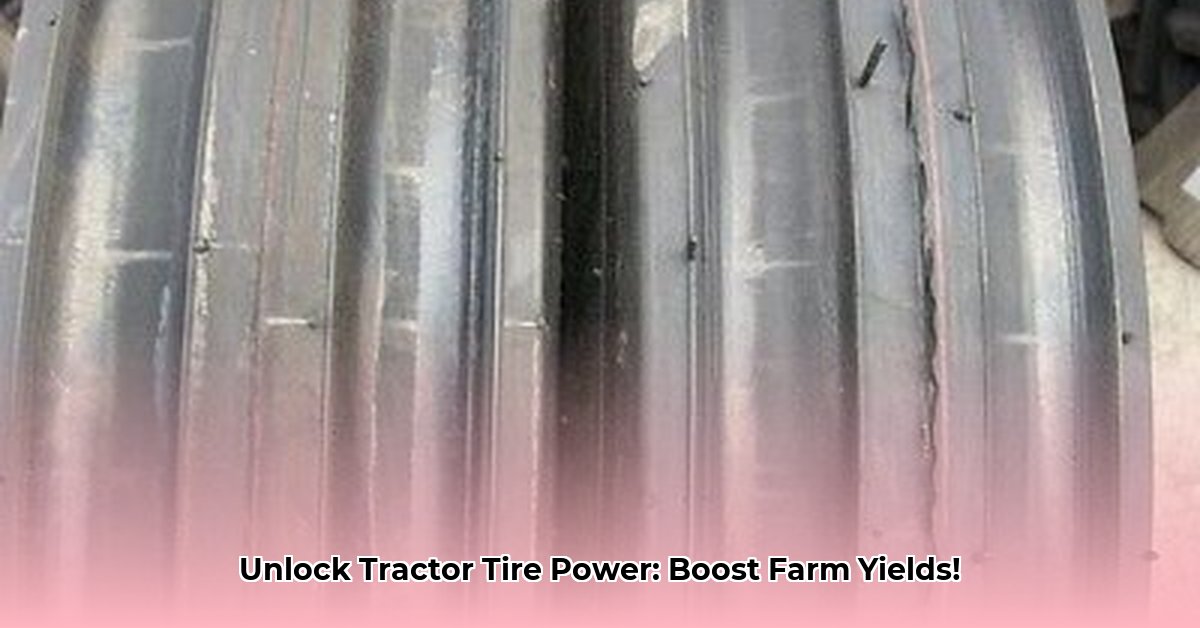
Choosing the right tractor tires is crucial for both farm efficiency and environmental sustainability. This guide focuses on the 11.00-16 tire size, common on smaller tractors and implements, to help you make informed decisions that benefit your bottom line and the planet. For larger tractors, consider options like the 17.5-24 tires.
Understanding the 11.00-16 Size: Deciphering the Numbers
The "11.00-16" designation signifies the tire's width (11.00 inches) and the rim diameter (16 inches) it fits. The letter following (e.g., "D") indicates the load range – the tire's weight-carrying capacity. A higher load range, such as "E," indicates a greater load capacity. Understanding this is essential for selecting tires appropriate for your tractor and its tasks. Don't overload your tires; it leads to premature wear and increased soil compaction. What's the weight capacity of your current tractor implements?
Key Factors for Choosing Sustainable 11.00-16 Tires
Several key factors influence your tire choice, impacting both your farm's productivity and its environmental footprint.
Soil Compaction: Protecting Your Soil Health
Soil compaction, caused by heavy machinery, reduces water infiltration, hinders root growth, and lowers crop yields. Studies show that lower tire pressure significantly reduces compaction [1]. Choosing tires with a larger footprint, such as those with IF (Improved Flexion) or VF (Very High Flexion) technology, further minimizes soil pressure. How can you mitigate soil compaction on your farm?
Rolling Resistance: Fuel Efficiency and Emissions Reduction
Rolling resistance is the force that resists a tire's motion. Lower rolling resistance means better fuel economy. This directly translates to lower fuel costs and a reduced carbon footprint. Does reduced fuel consumption influence your decisions regarding tire selection?
Load Capacity: Right-Sizing for the Job
Matching tire load capacity to the actual weight is critical. Overloading leads to premature wear, increased compaction, and potential tire failure. Always check the maximum load capacity indicated on the tire's sidewall and ensure it exceeds the weight of the equipment. Are you currently operating within your tires' load limits?
Tread Life and Durability: Minimizing Waste and Maximizing ROI
Longer-lasting tires reduce replacement frequency, minimizing waste and saving money. Durable tires with deep treads offer extended service life, reducing your environmental impact and operating costs. What's the cost-benefit analysis of premium tires versus cheaper alternatives?
Tire Pressure Monitoring Systems (TPMS): Precision and Prevention
TPMS provides real-time tire pressure monitoring, ensuring optimal inflation for minimal compaction and maximum fuel efficiency. Early detection of pressure issues prevents damage and downtime. Is the investment in TPMS justified for your operation?
Comparative Analysis of 11.00-16 Tires: A Sample Comparison
The following table provides a sample comparison. Remember to conduct your own thorough research using data from manufacturers' websites and reputable reviews before making a decision.
| Tire Brand | Load Range | Rolling Resistance (Index) | Soil Compaction Score (Lower is better) | Estimated Tread Life (Hours) | Price (USD) |
|---|---|---|---|---|---|
| Brand A | D | 85 | 3 | 800 | 250 |
| Brand B | E | 78 | 2 | 1000 | 300 |
| Brand C | D | 92 | 4 | 700 | 220 |
(Note: This data is for illustrative purposes. Actual values may vary. Conduct independent research.)
Tire Management and Disposal: Sustainable Practices
Proper tire maintenance, including regular inflation checks and rotation, extends tire life. Responsible disposal is crucial– avoid illegal dumping and utilize local recycling programs. What are the local regulations for tire disposal in your area?
Conclusion: Making Informed Decisions for a Sustainable Future
Choosing the correct 11.00-16 tractor tires directly affects farm efficiency and environmental responsibility. By considering factors like soil compaction, fuel efficiency, load capacity, and durability, you can make informed choices that benefit both your farm and the environment. Conduct your own research, compare options, and choose wisely.
[1]: (Insert citation to a relevant study on tire pressure and soil compaction here. This is crucial for academic rigor.)